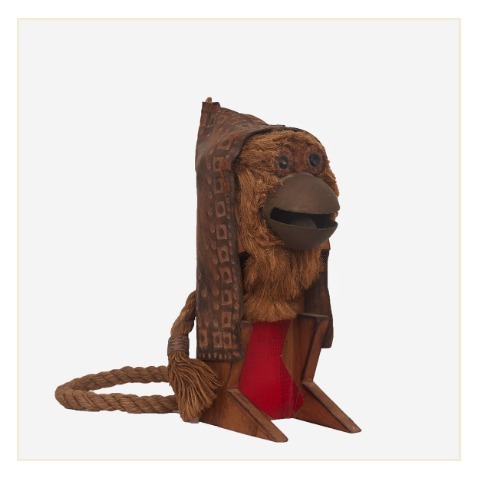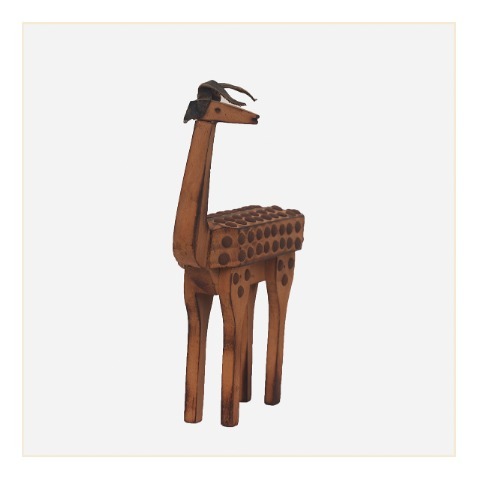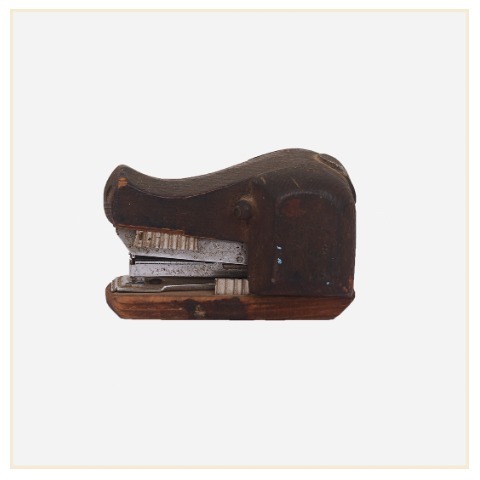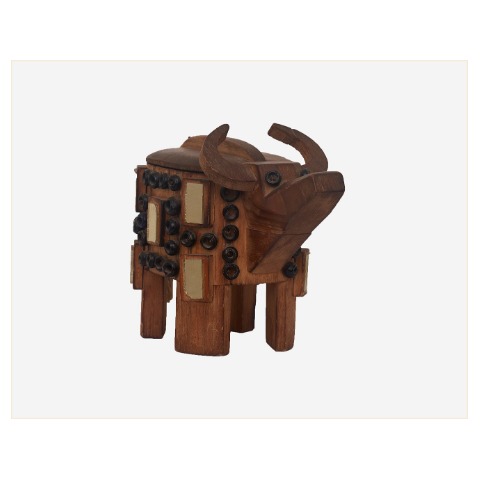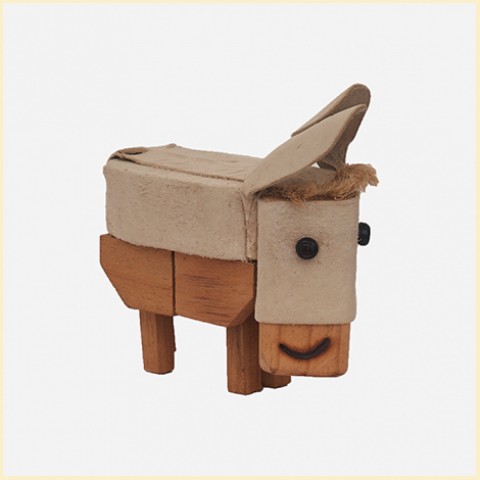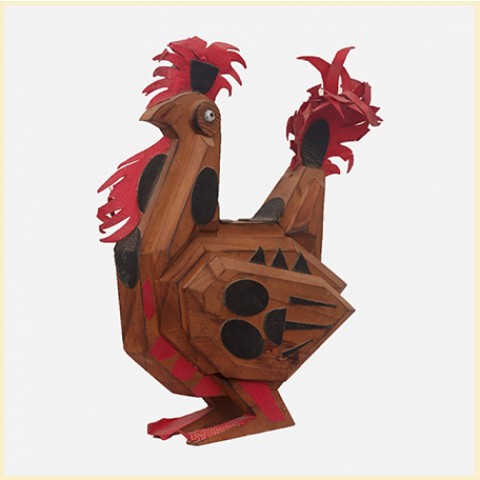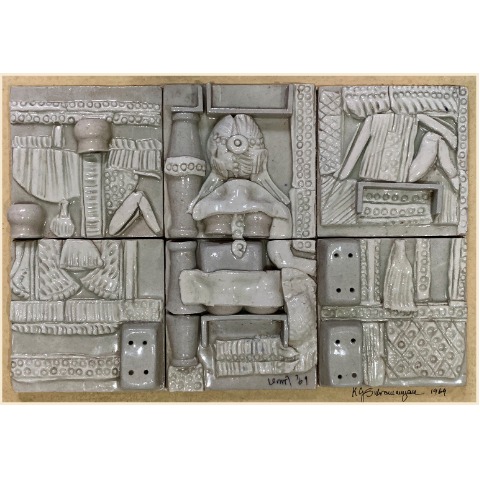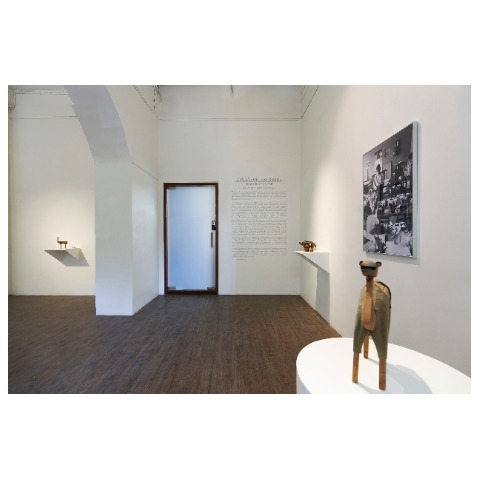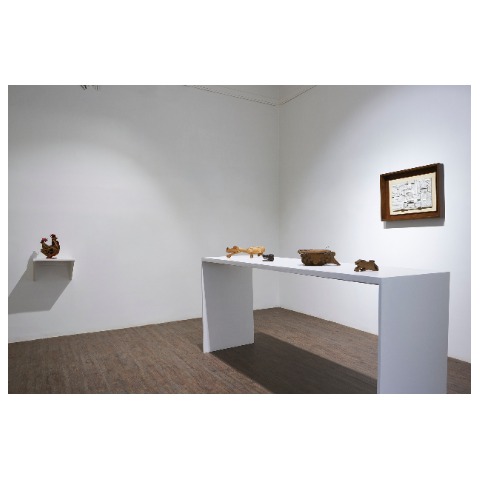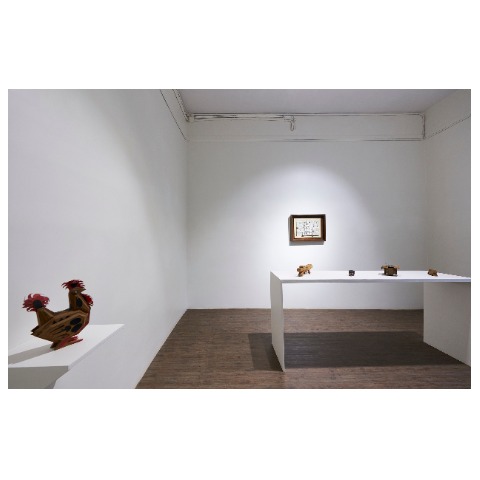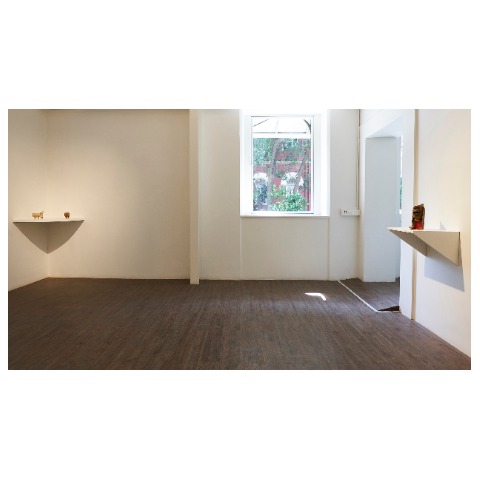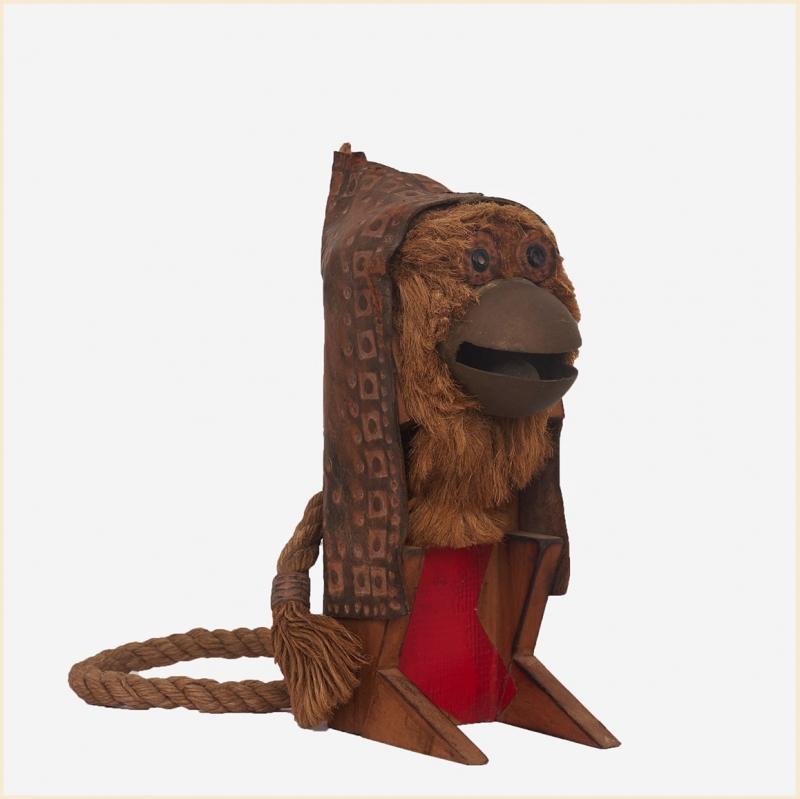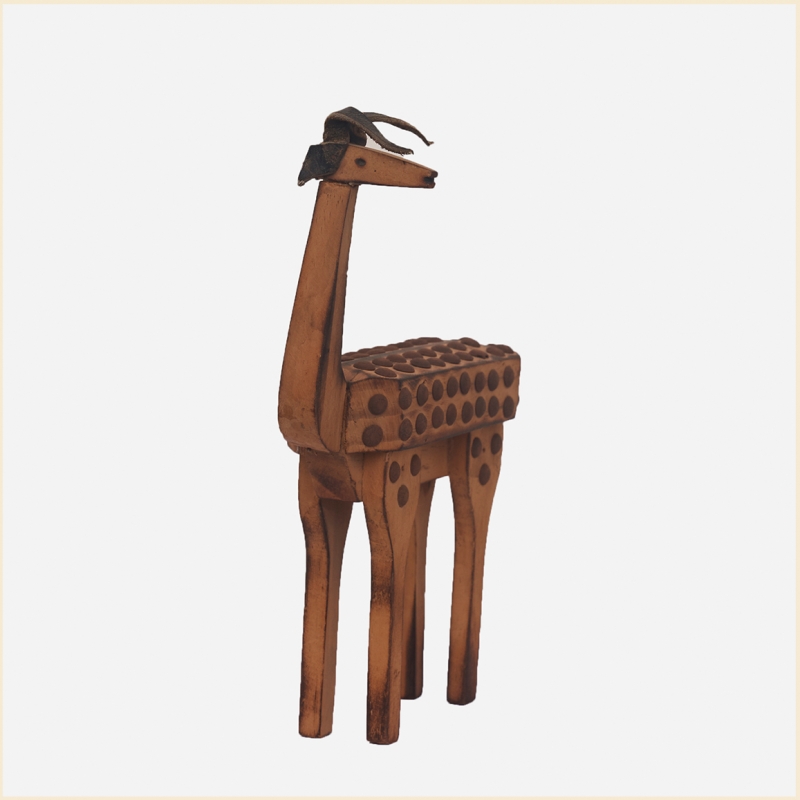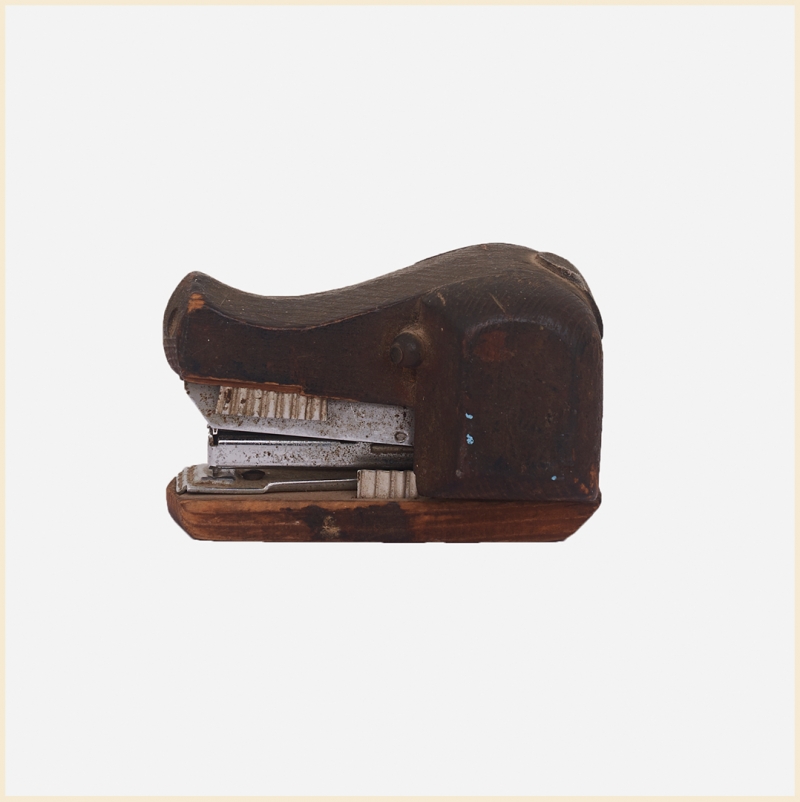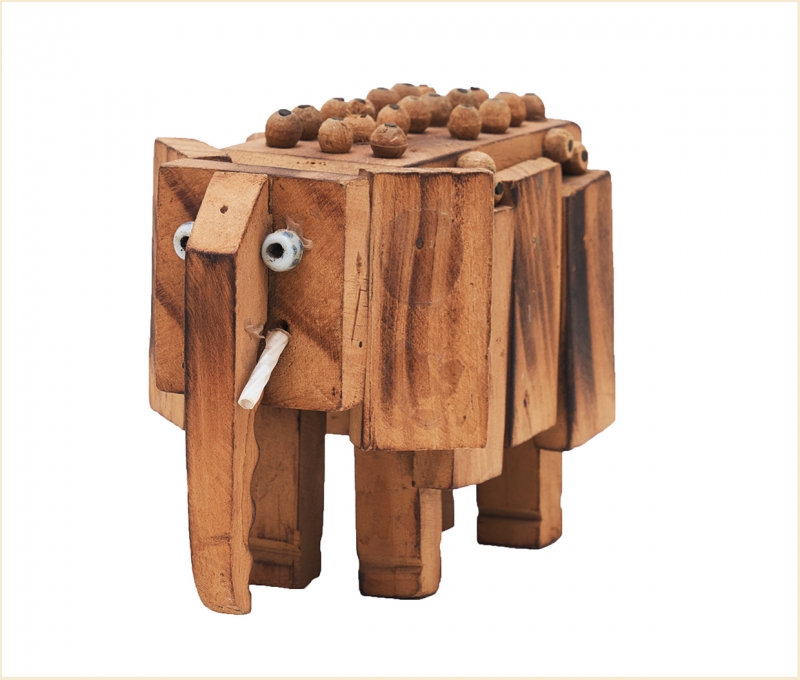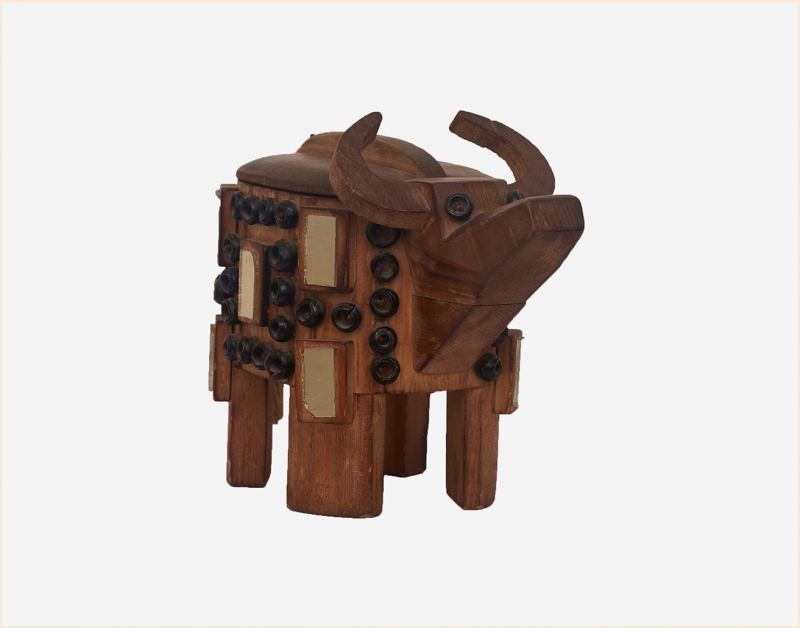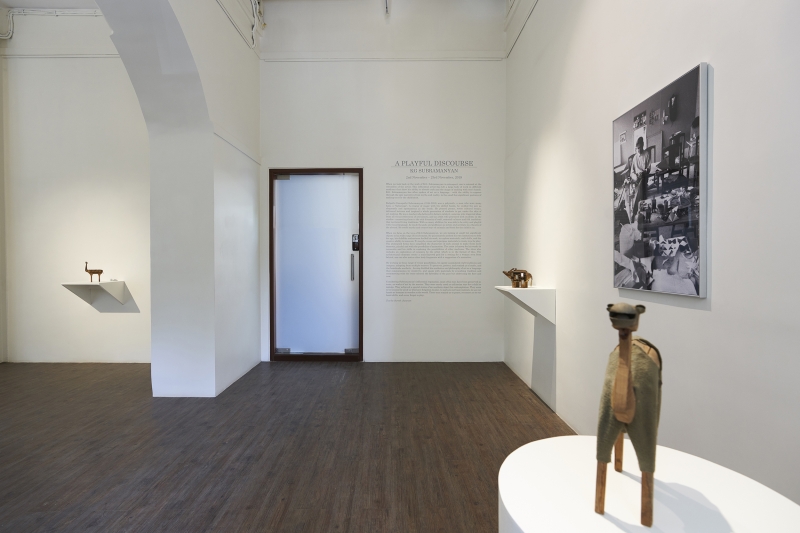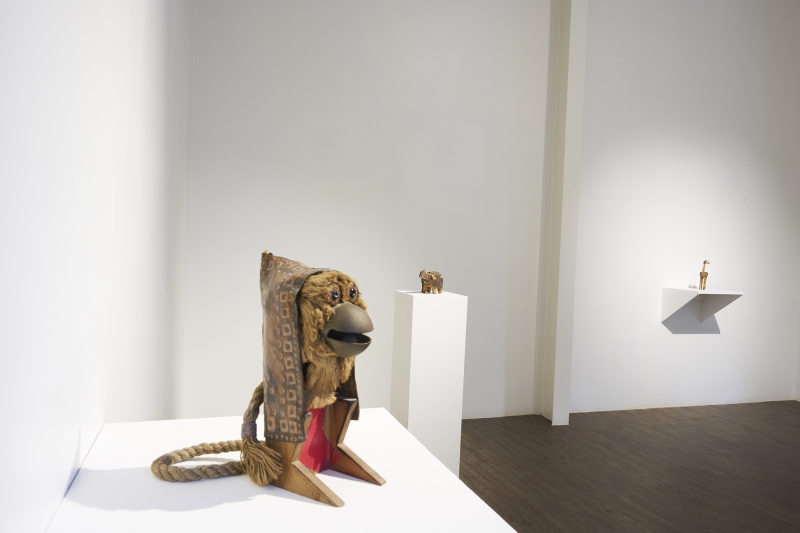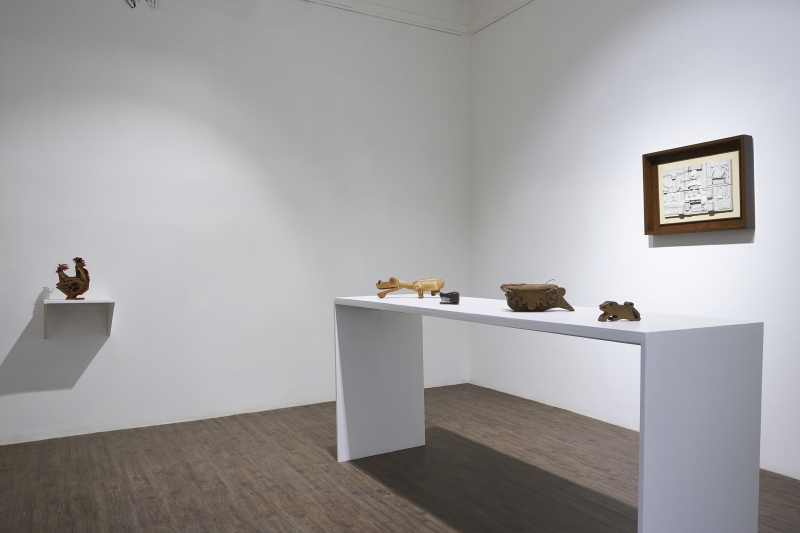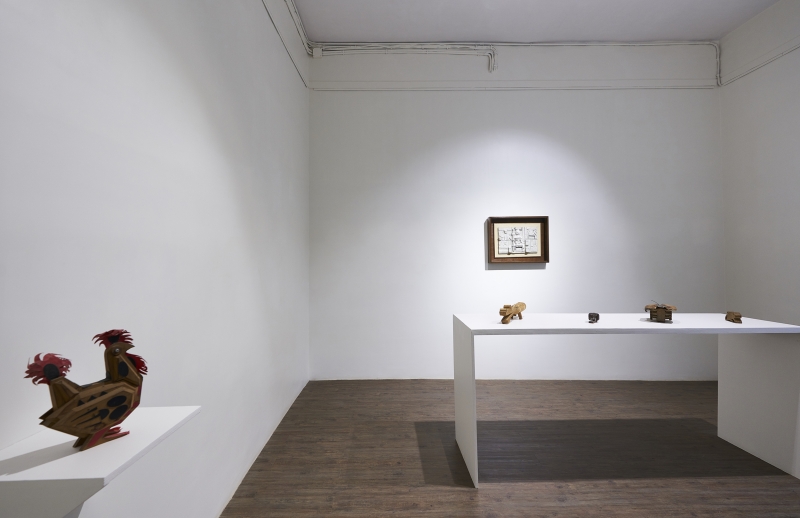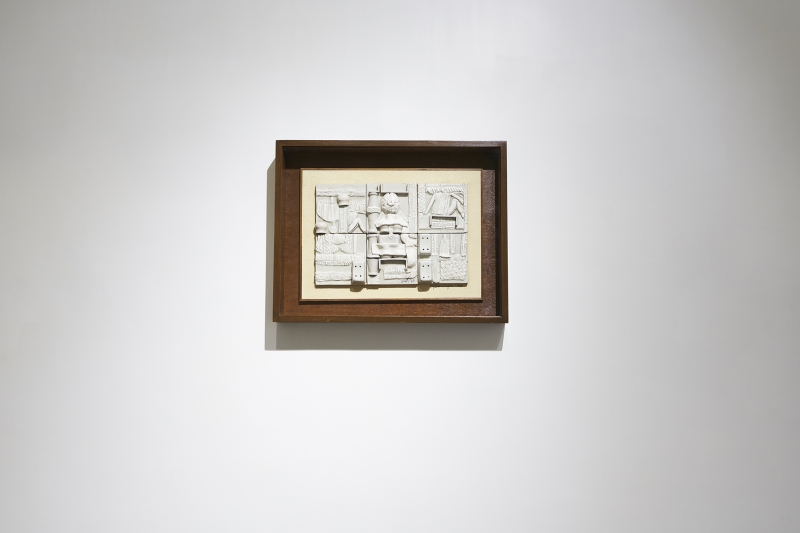
A PLAYFUL DISCOURSE: KG SUBRAMANYAN
November 02 - November 23 , 2019
When we look back at the work of K.G. Subramanyan in retrospect, one is amazed at the versatility of the artist. This influential artist has left a large body of work in different mediums that show his ability to absorb craft and the magic of making with one's hands. Subramanyan has often spoken of art as a language - with the ability to express through the epic narratives from myths and reality, to the small but significant gestures of making toys for the child/adult.Kalpathi Ganapathi Subramanyan (1924-2016) was a polymath, a man who wore many hats, a “bahuroopi”. A creator of magic with his skilled hands, he yielded the pen as eloquently and spontaneous as the brush. He penned poems, wrote cultural essays, delivered lectures and inspired a whole generation of students to get under the skin of art-making. He was a teacher who believed in being a catalyst, someone who triggered ideas from all visual references of art history, and an artist who practiced with students in the studios - connecting them to the rich diversity of craft, material cultures and folk traditions that nurtured living traditions. With so many abilities, he was able to be witty and playful with visual language, he made the gods and goddesses as actors and acrobats in a theatre of the absurd. He retold myths and created toys of animals and birds for the child in us.
I belong to a generation who heard about Subramanyan as a guru, with respect and fear, and from my teachers in Baroda and senior artists from the community who he had nurtured and inspired. The first opportunity I had as a young art student, (who made the customary pilgrimage to Kalabhavan Santineketan in the 90’s) I wanted to meet Manida. I followed him like a shadow from a distance, and I watched him squatting and painting terracotta plates like a craftsman. These shoras were decorative terracotta plates that were painted by teachers and students and were sold in the Nandan Mela - the annual art fair of this hallowed institute.We were introduced by renowned artist and teacher Jogen Chowdhury to Manida at the adda of Kalabhavan, chatting with his customary Beedi and chai, who smiled benevolently and observed the world go by. This gesture of making art affordable, tangible and part of living was the essence of the Nandan Mela. This was adapted in Baroda at the Faculty of Fine Arts, it exposed students to the Master craftsmen who transferred skills that have passed down as a tradition. Collective collaboration of an art college that celebrated the joy of making and opened the institute to the community to participate, this helped in creating an informed audience, develop taste and make art-making less esoteric.
The art college became a mela, a carnivalesque celebration of conversations, theatre, crafts, and encouraged students’ learning and making with one’s hands. It created a new circuit of informal learning that was non-hierarchical and provided a space to experiment with materials that were often governed by classroom restrictions. Most importantly it created a space to dirty one's hands, learns skills and enjoy the act of playing.
When we focus on the toys of K.G Subramanyan, we are looking at small but significant objects in his wide range of involvement. He passionately pushed his own limitations to defy is age, his childlike enthusiasm fuelled his work, to explore materials, craft skills, and the creative ability to innovate. To recycle, reuse and repurpose materials to create toys for play. The abstracted forms have simplified the characters of each animal to make them more domestic, playful and with the possibility of animation. The artist is known for his works in terracotta and his skills in exploring the possibilities of other mediums. The show also includes an exploration of ceramics by the artist, this monochromatic ceramic mural is in the format of tiles. The architectural elements create a multi-layered grid for a setting for a woman seen from behind, one can also notice other body fragments with a suggestion of a narrative.
By working in these range of visual possibilities, he openly assimilated craft traditions and imagery, adapting from multiple sources. To preserve, protect, and remind us of crafts, and the handmade aesthetic - having distilled his aesthetics and philosophy of art as a language that communicates by creativity, and speak with materials by reworking tradition and reconnecting with the cross-cultural the hybridity of the past but addressing the here and now.
The toys in focus are to be held with one’s hands, they have the potential to become puppets to narrate fables of Panchatantra or Aesop’s tales, or are they character’s from ‘The Animal Farm’? The materials are wood, bamboo, felt, scrap leather and metal, salvaged and reused to articulate the characters of animals. K.G.Subramanyan's work have often featured beasts and birds, representing said characters as big and small - both physically and metaphorically - in his mythical narratives. His world is filled with animated creatures observed from nature that often take on roles carrying gods and goddesses or as distinctive characters with their own personalities and voices in the respective narratives. His deft hands used materials to exploit their qualities with an acute understanding of how to manipulate them, all for the joy of making and producing. The toys in this collection are typical of Manida's relationship to form, as he abstracts them and retains the fundamental essence and character of the animal or bird such as the stupendousness of an elephant or the Buffalo; the elegance of the camel; the agility of the Langoor; the cockiness of the rooster; and the cuteness of the donkey. There is a sense of play in his hands primarily utilized to communicate the creative use of diverse materials like wood, felt, leather, bamboo, mirror, seeds, and an assemblage of other materials used to rework the decorative traditions and to reconstruct creatures/animals seen in folk puppets and toys from cross-cultural references. The rooster seems to announce the beginning of the new day with the flourish of his red plumes. The elephant, the buffalo, and the camel seem to be dressed up with ornaments ready for a parade. The Langoor is lovingly created with a bell as its head, and a cape to entertain in the carnival with mischievous pranks. The artist took inspiration even from the zoo that was across the Faculty of Fine arts, to humorously look at the human characters as birds and beasts in the spirit of a carnival.
Considering Subramanyan's influential reputation, most of his toys have been preserved as icons, as works of art by the master. They were rarely used as utilitarian toys for a child to indulge. They achieved a special status of an aesthetic object for contemplation. They seem to be lessons for all of us who have forgotten to play, to nurture our basic instincts to use our hands as humans to wonder at the world. These toys remind us to pause, reconnect us to our hand-skills, and never forget to play.
Texy by Suresh Jayaram
